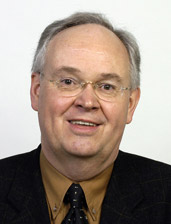Group Interview
Year: June 22nd, 2005
Location: near Amsterdam
Interviewed by: Blackburn, Henry
Abstract
This is a free-ranging discussion, difficult to transcribe because five people were involved. Noted were these points: The loss of the cable between Einthoven’s lab and the clinic, for administrative reasons, resulted in Einthoven working with Sir Thomas Lewis, a fortuitous happening which greatly enhanced the science and spread the gospel of electrocardiology to the UK and then the US.
Prof Frenkel recalled a social occasion at Groen’s home in the late ‘40s attended by Brozek who was singing the Keys hypothesis already, as well as Slavic folk songs [a word of mouth exchange that clearly influenced Amsterdam and Minnesota] The story was told that Groen’s monk cholesterol study called the Pope’s attention to the severity of cloistered life in the Netherlands, such that the monks there were given 20 minutes extension of their sleeping allowance!
There was an effort to elaborate the McMichaels-Meijler naysaying on cholesterol and epidemiology. No solution was found but their pique was the perception that preventionists saw only black and white and no grays, no uncertainty. In fact, they don’t separate the individual and population issues and have an ingrained bias about statistics, quoting a sage that “if you need 10,000 cases to answer the question it cannot be a very significant one.”
There was consensus that Snapper was a brilliant but pompous person, DeLangen a fabricator of tall tails, and Groen a thoughtful gentle person of deep moment to them and to Dutch medicine.(HB)
Quotes
Frits Meijler (FM): And then this situation of the cholesterol story came up and I didn’t know the least single thing about cholesterol. But there was a huge meeting at the top of the Institute in Amsterdam and it was something very sophisticated with an arrangement between medicine and social sciences and who was that Prince, the husband of the Queen of England, he came, and then they decided to have a discussion on the prevention of coronary arteriosclerosis. The proponent was Dr. Arntzenius and they decided they should have a devil’s advocate. They asked me if I would be the opponent […]. I didn’t know anything so I started to read about cholesterol and coronary heart disease. And then I found many papers disagreeing with the whole concept. And I had never heard before that we had a Dutch Heart Association, and everything to them was white or black. There were no nuances of gray whatsoever. I decided it wasn’t a scientific approach anymore so I started to read and really became convinced that the story was much more complicated than they would tell the population.
I thought the last slide in my argument should be a very nice slide, it was just before Christmas. In Amsterdam you had a shop called Dick and Dice. It was a delicatessen with sausage and ham and cheese and everything that you were forbidden to eat by the Dutch Heart Association. So I finished my talk showing the deli slides and then said I wish you all a Merry Christmas! It was a scandal. I was excommunicated. Bert Decker said I was misleading the people. I was excommunicated forever.
HB: Even though you were just there for the debate. Your argument was too convincing, including for yourself.
HB: “I am trying to understand where the intensity of his emotion came from [Sir John McMichael’s prevention naysaying]
FM: His emotion came from the black white story of the whole diet-heart hypothesis. He was really a scientist at heart and for him the lesson was in a way more important than the results.
Full Transcript Access
Full transcripts of interviews may be made available to those engaged with original materials for scholarly studies by contacting us.
